Find The Best Shingle Roof Replacement Contractors On Roofyng.com
Top-Rated Shingle Roof Replacement
Discover Other Roofing Services
Professional Roofing Services
Find trusted roofing companies near you. Get multiple quotes for roof installation, repair, and replacement services.
New Roof Construction
Get a new roof installed by experienced professionals. We offer a variety of roofing materials and styles to suit your needs and budget.
Roofing Repair
Comprehensive roof repair services for all types of roofs. We fix leaks, damage, and other roofing issues to keep your property protected.
Roof Replacement Services
Complete roof replacement services for residential and commercial buildings. We remove your old roof and install a new roof with the material of your choice.
Commercial Roofing Experts
Specialized roofing services for commercial buildings. We handle installation, repair, and replacement for all types of commercial roofs.
Asphalt Shingle Roofing Contractors
Expert shingle roofers for your home. We specialize in asphalt shingle installation, repair, and replacement, offering a range of shingle types and colors.
Same Day Roof Repair
24/7 emergency roof repair services for urgent situations. We respond quickly to storm damage, leaks, and other roofing emergencies to protect your property.
Fix Roof Leak
Fast and reliable roof leak repair services. We identify and fix the source of leaks to protect your property from water damage.
Tile Roofer
Expert tile roofing services for your home. We specialize in the installation, repair, and replacement of tile roofs, offering a variety of styles and colors.
Standing Seam Metal Roof Installers
Durable and stylish steel roof installation services. We offer a variety of metal roofing options, including standing seam and corrugated metal.
Shingle Roof Repairs
Expert shingle roof repair services for your home. We fix leaks, damaged or missing shingles, and other common shingle roofing problems.
Built-Up Roofing (BUR) Contractors
Expert flat roof installation and repair services. We work with a variety of flat roofing systems, including TPO, EPDM, and modified bitumen.
Green Roof Maintenance
Sustainable and eco-friendly green roof installation and maintenance. We create beautiful living roofs that benefit the environment and your property.
Repair Hail Damaged Roof
Specialized roofing companies experienced in hail damage repair and replacement. We work with insurance companies to get your roof restored after a hailstorm.
Steel Roof Repairs
Professional metal roof repair services for residential and commercial properties. We fix leaks, dents, rust, and other metal roof issues.
Roof Inspector
Certified roof inspectors provide thorough roof inspections for insurance claims, pre-purchase evaluations, and maintenance assessments.
Metal Roof Replacement Companies
Long-lasting and energy-efficient metal roof replacement services. We install durable steel or metal roofs that enhance your property's value and curb appeal.
Flashing Repair Near Me
Professional roof flashing repair to prevent leaks and water damage. We repair and seal flashing around chimneys, skylights, vents, and other roof penetrations.
Roof Waterproofing
Professional roof waterproofing services to protect your property from leaks and water damage. We apply high-quality sealants, membranes, and coatings to ensure
EPDM Roof Replacement
Durable and long-lasting rubber roof (EPDM) installation and repair services. Ideal for flat or low-slope roofs on residential and commercial buildings.
TPO Roofing Company
Expert TPO roofing services for flat and low-slope roofs. We offer high-quality TPO roof installation, repair, and maintenance for residential and commercial pro
Tile Roof Repair
Specialized tile roof repair services. We fix leaks, replace cracked or broken tiles, and provide other tile roof maintenance to keep your roof in excellent cond
Industrial Roofing Services
Specialized roofing contractors for industrial facilities. We handle large-scale roof installations, repairs, and replacements for factories, warehouses, and oth
New Tile Roof Installation
Beautiful and durable tile roof replacement services. We install high-quality clay or concrete tile roofs, offering a classic and elegant look for your home.
Residential Flat Roof Replacement
Reliable flat roof replacement services for residential and commercial properties. We specialize in installing durable and weather-resistant flat roofing systems
24/7 Roof Tarping
24/7 emergency roof tarping services to protect your property from further damage. We provide temporary roof covers after storms or other incidents.
Chimney Flashing Repair
Expert chimney flashing repair services to prevent leaks and water damage. We ensure your chimney is properly sealed to protect your home.
Attic Insulation Services
Improve your home's energy efficiency and comfort with our roof insulation services. We install and replace attic insulation to reduce energy costs and keep your
Wood Shake Roof Repair
Beautiful and durable cedar shake roofing services. We specialize in cedar shake installation, repair, and replacement, providing a classic and elegant look for
Finding The Right Shingle Roof Replacement Contractor Is Easy With Roofyng.com

- Tell Us About Your Project
- Tell us about your shingle roof replacement needs, such as the size and type of your roof, desired shingle style, and budget.
- We Connect You With Local Contractors
- We'll match you with reputable shingle roof replacement contractors in your area who specialize in your project type.
- Compare Quotes & Choose The Best Fit
- Review quotes, compare services, and select the shingle roof replacement contractor that best suits your requirements and budget. We provide you with the information you need to make an informed choice.
- Get Your Project Started!
- Once you've chosen your contractor, you can confidently begin your shingle roof replacement project.
Why Choose Roofyng.com for Your Shingle Roof Replacement?
The smarter way to find Shingle Roof Replacement contractors

- Vetted and Reliable Contractors
- We carefully screen all shingle roof replacement contractors listed in our directory to ensure they are licensed, insured, and have a proven track record of quality workmanship. You can have confidence in the professionals you find on Roofyng.com.
- Competitive Quotes, Hassle-Free
- Requesting quotes is simple and convenient. Tell us about your project, and we'll connect you with qualified contractors in your area who can provide competitive estimates. Compare pricing and services without the hassle of searching and contacting multiple companies.
- Save Time and Effort
- Finding the right shingle roof replacement contractor can be time-consuming. We streamline the process by doing the legwork for you. Simply submit your project details, and we'll match you with suitable contractors in your area, saving you valuable time and effort.
- Comprehensive Choice
- Our directory includes a diverse range of shingle roof replacement contractors specializing in various shingle types, styles, and price points. Whether you're looking for traditional three-tab shingles, architectural shingles, or designer options, you'll find the right expertise for your needs.
- Informed Decision-Making
- We provide you with the tools and information you need to make an informed choice. Browse contractor profiles, read reviews from previous clients, and compare quotes to select the best contractor for your shingle roof replacement project.
- Free and User-Friendly
- Roofyng.com is a completely free service for homeowners and businesses. Our platform is user-friendly and designed to make finding the right contractor easy and efficient. Get started today and experience the difference!
Need a New Shingle Roof for Your Business?
Commercial Shingle Roof Replacement
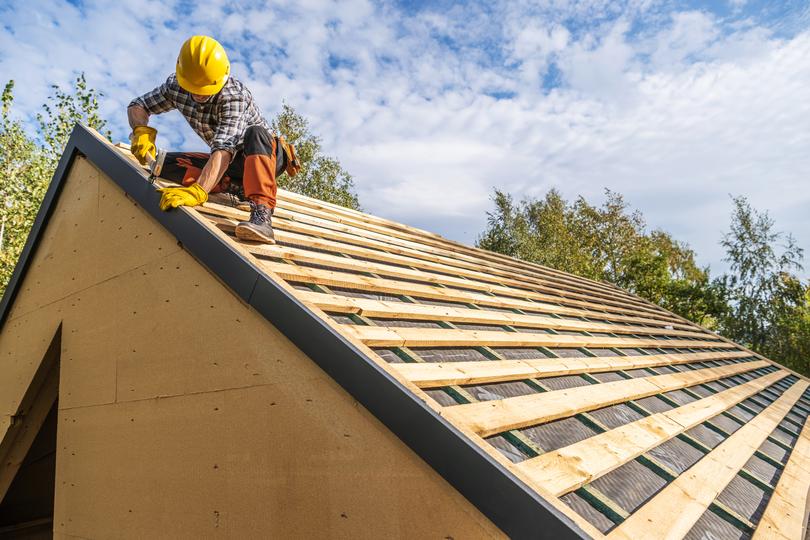
Roofing Companies
Find trusted roofing companies near you. Get multiple quotes for roof installation, repair, and replacement services.
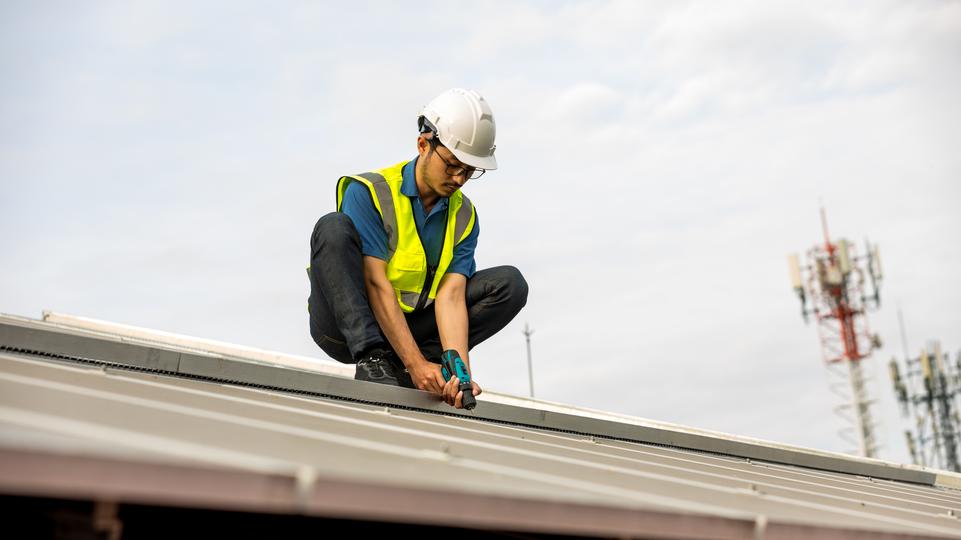
Roof Installation Near Me
Get a new roof installed by experienced professionals. We offer a variety of roofing materials and styles to suit your needs and budget.
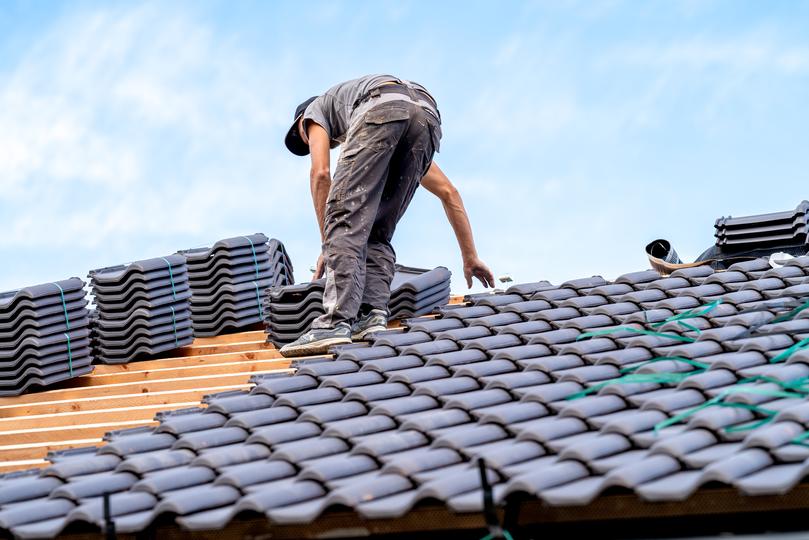
Roof Repair
Comprehensive roof repair services for all types of roofs. We fix leaks, damage, and other roofing issues to keep your property protected.
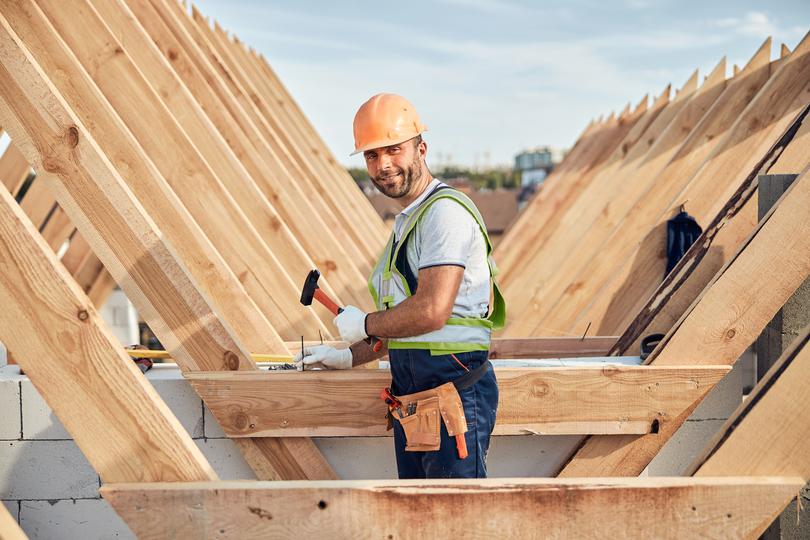
Roof Replacement
Complete roof replacement services for residential and commercial buildings. We remove your old roof and install a new roof with the material of your choice.

Commercial Roof Maintenance
Specialized roofing services for commercial buildings. We handle installation, repair, and replacement for all types of commercial roofs.
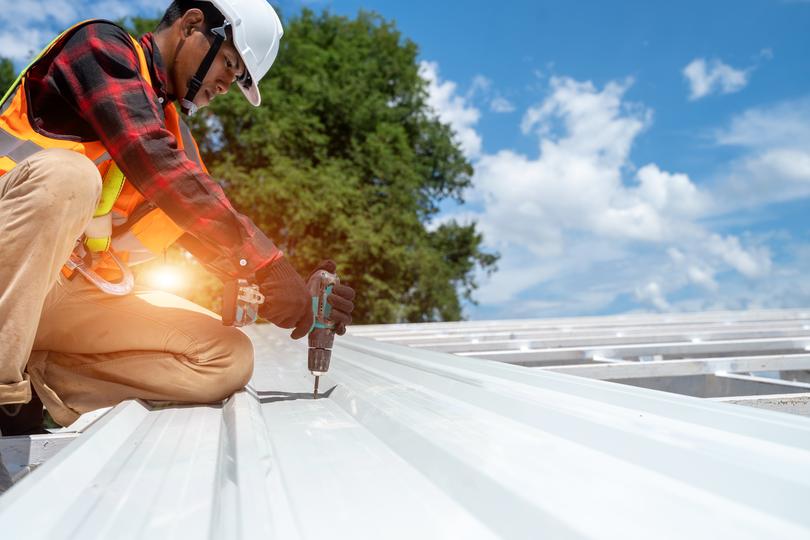
Roofing Emergencies
24/7 emergency roof repair services for urgent situations. We respond quickly to storm damage, leaks, and other roofing emergencies to protect your property.

Emergency Roof Leak Repair
Fast and reliable roof leak repair services. We identify and fix the source of leaks to protect your property from water damage.
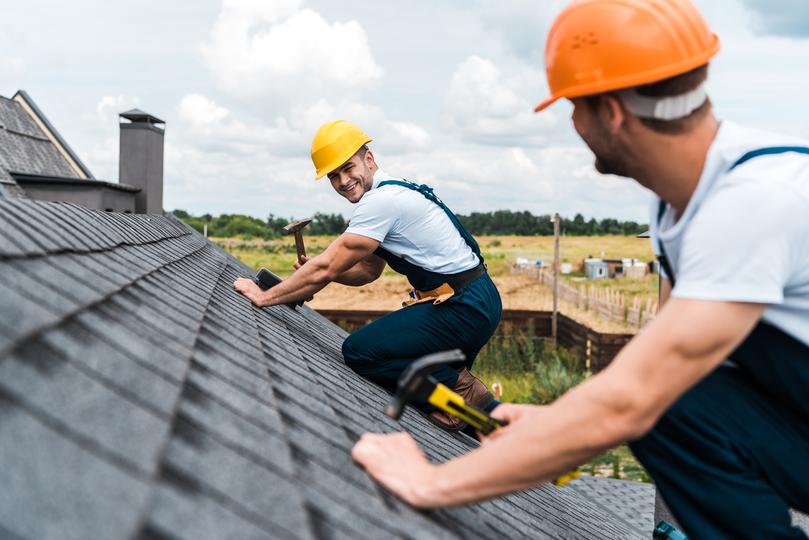
Standing Seam Metal Roof Installers
Durable and stylish steel roof installation services. We offer a variety of metal roofing options, including standing seam and corrugated metal.
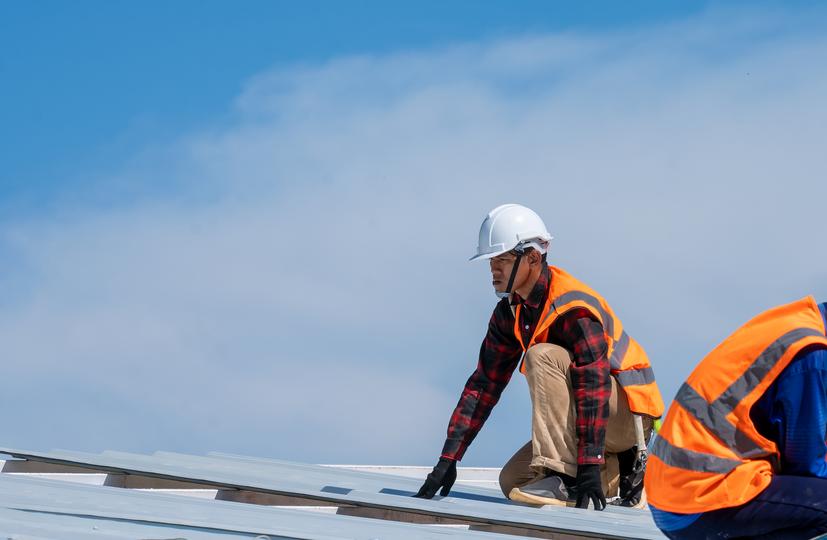
Flat Roof Coatings
Expert flat roof installation and repair services. We work with a variety of flat roofing systems, including TPO, EPDM, and modified bitumen.

Green Roof Installation
Sustainable and eco-friendly green roof installation and maintenance. We create beautiful living roofs that benefit the environment and your property.

Hail Damage Roofing Companies
Specialized roofing companies experienced in hail damage repair and replacement. We work with insurance companies to get your roof restored after a hailstorm.
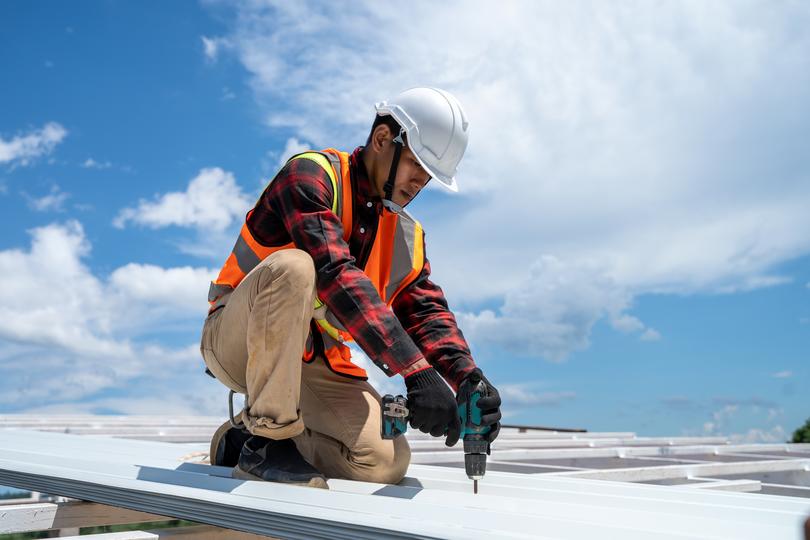
Fix Metal Roof
Professional metal roof repair services for residential and commercial properties. We fix leaks, dents, rust, and other metal roof issues.

Roof Inspection
Certified roof inspectors provide thorough roof inspections for insurance claims, pre-purchase evaluations, and maintenance assessments.
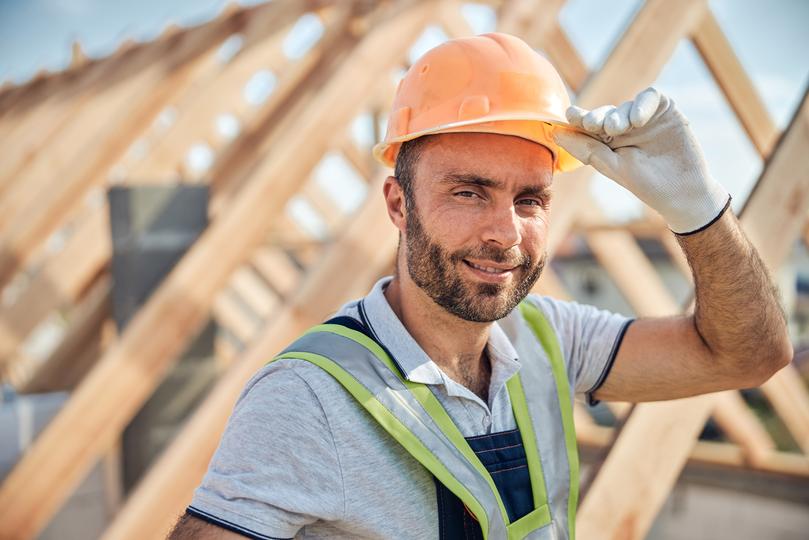
Metal Roof Replacement Companies
Long-lasting and energy-efficient metal roof replacement services. We install durable steel or metal roofs that enhance your property's value and curb appeal.

Fix Roof Flashing
Professional roof flashing repair to prevent leaks and water damage. We repair and seal flashing around chimneys, skylights, vents, and other roof penetrations.

Roof Waterproofing Estimates
Professional roof waterproofing services to protect your property from leaks and water damage. We apply high-quality sealants, membranes, and coatings to ensure
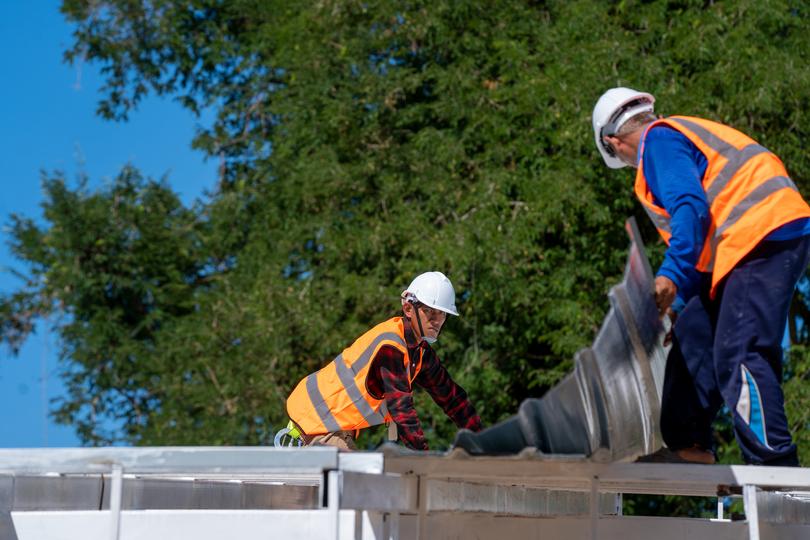
Rubber Roof Replacement
Durable and long-lasting rubber roof (EPDM) installation and repair services. Ideal for flat or low-slope roofs on residential and commercial buildings.

TPO Roofing Contractor
Expert TPO roofing services for flat and low-slope roofs. We offer high-quality TPO roof installation, repair, and maintenance for residential and commercial pro

Industrial Roof Maintenance
Specialized roofing contractors for industrial facilities. We handle large-scale roof installations, repairs, and replacements for factories, warehouses, and oth
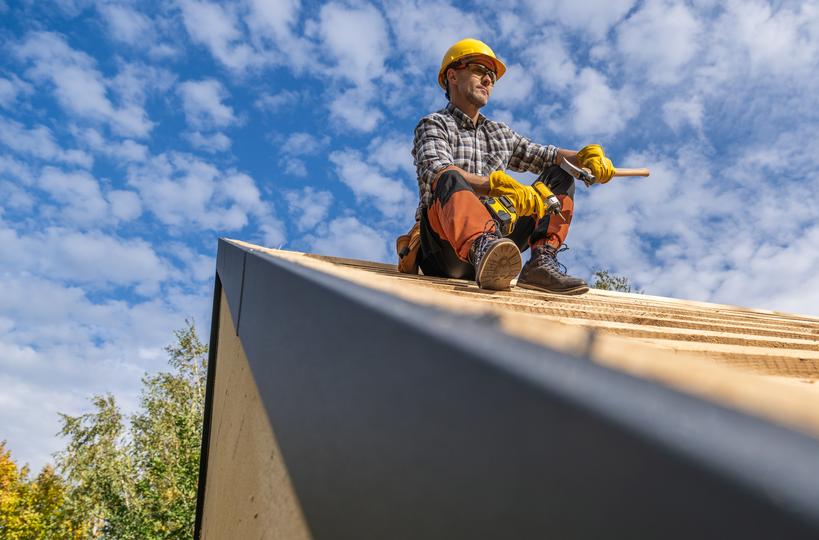
Flat Roof Replacement Estimate
Reliable flat roof replacement services for residential and commercial properties. We specialize in installing durable and weather-resistant flat roofing systems
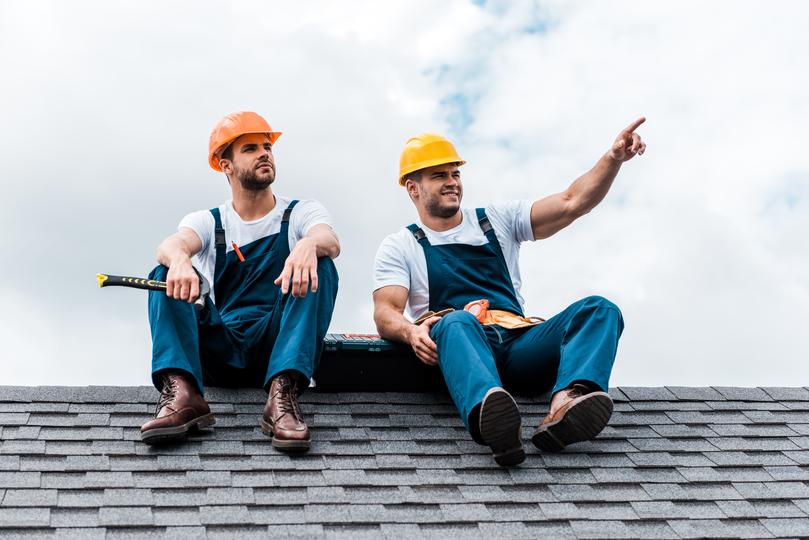
Tarp My Roof
24/7 emergency roof tarping services to protect your property from further damage. We provide temporary roof covers after storms or other incidents.

Roof Insulation Company
Improve your home's energy efficiency and comfort with our roof insulation services. We install and replace attic insulation to reduce energy costs and keep your
Shingle Roof Replacement for Your Home?
Residential Shingle Roof Replacement

Roofing Services
Find trusted roofing companies near you. Get multiple quotes for roof installation, repair, and replacement services.

Install New Roof
Get a new roof installed by experienced professionals. We offer a variety of roofing materials and styles to suit your needs and budget.

Roof Repair
Comprehensive roof repair services for all types of roofs. We fix leaks, damage, and other roofing issues to keep your property protected.

Roof Replacement Near Me
Complete roof replacement services for residential and commercial buildings. We remove your old roof and install a new roof with the material of your choice.

Architectural Shingle Roofers
Expert shingle roofers for your home. We specialize in asphalt shingle installation, repair, and replacement, offering a range of shingle types and colors.

Immediate Roof Repair
24/7 emergency roof repair services for urgent situations. We respond quickly to storm damage, leaks, and other roofing emergencies to protect your property.

Get a Roof Leak Repair Quote
Fast and reliable roof leak repair services. We identify and fix the source of leaks to protect your property from water damage.

Tile Roofing Company
Expert tile roofing services for your home. We specialize in the installation, repair, and replacement of tile roofs, offering a variety of styles and colors.

Metal Roofing Companies
Durable and stylish steel roof installation services. We offer a variety of metal roofing options, including standing seam and corrugated metal.

Repair Shingle Roof
Expert shingle roof repair services for your home. We fix leaks, damaged or missing shingles, and other common shingle roofing problems.

Shingle Roof Replacement
Affordable and efficient shingle roof replacement services. We remove your old shingles and install a new, durable asphalt shingle roof.

Flat Roof Installation
Expert flat roof installation and repair services. We work with a variety of flat roofing systems, including TPO, EPDM, and modified bitumen.

Vegetated Roof Installers
Sustainable and eco-friendly green roof installation and maintenance. We create beautiful living roofs that benefit the environment and your property.

Repair Hail Damaged Roof
Specialized roofing companies experienced in hail damage repair and replacement. We work with insurance companies to get your roof restored after a hailstorm.

Steel Roof Repairs
Professional metal roof repair services for residential and commercial properties. We fix leaks, dents, rust, and other metal roof issues.

Roof Inspection
Certified roof inspectors provide thorough roof inspections for insurance claims, pre-purchase evaluations, and maintenance assessments.

Residential Metal Roof Replacement
Long-lasting and energy-efficient metal roof replacement services. We install durable steel or metal roofs that enhance your property's value and curb appeal.

Chimney Flashing Repair
Professional roof flashing repair to prevent leaks and water damage. We repair and seal flashing around chimneys, skylights, vents, and other roof penetrations.

Roof Coating for Waterproofing
Professional roof waterproofing services to protect your property from leaks and water damage. We apply high-quality sealants, membranes, and coatings to ensure

EPDM Roofing Near Me
Durable and long-lasting rubber roof (EPDM) installation and repair services. Ideal for flat or low-slope roofs on residential and commercial buildings.

TPO Roofer
Expert TPO roofing services for flat and low-slope roofs. We offer high-quality TPO roof installation, repair, and maintenance for residential and commercial pro

Repair Tile Roof
Specialized tile roof repair services. We fix leaks, replace cracked or broken tiles, and provide other tile roof maintenance to keep your roof in excellent cond
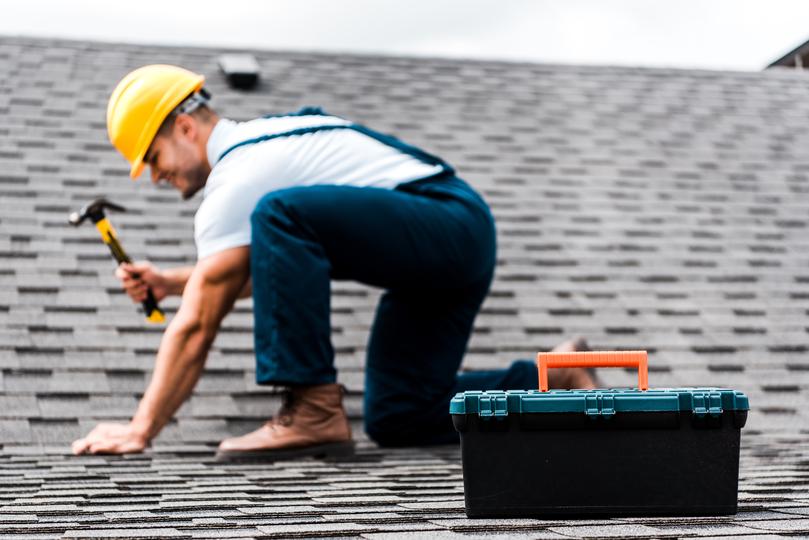
Tile Roof Tear-Off and Replacement
Beautiful and durable tile roof replacement services. We install high-quality clay or concrete tile roofs, offering a classic and elegant look for your home.

Flat Roof Replacement
Reliable flat roof replacement services for residential and commercial properties. We specialize in installing durable and weather-resistant flat roofing systems

Roof Tarping Services
24/7 emergency roof tarping services to protect your property from further damage. We provide temporary roof covers after storms or other incidents.

Chimney Waterproofing
Expert chimney flashing repair services to prevent leaks and water damage. We ensure your chimney is properly sealed to protect your home.

Roof Insulation Contractors
Improve your home's energy efficiency and comfort with our roof insulation services. We install and replace attic insulation to reduce energy costs and keep your
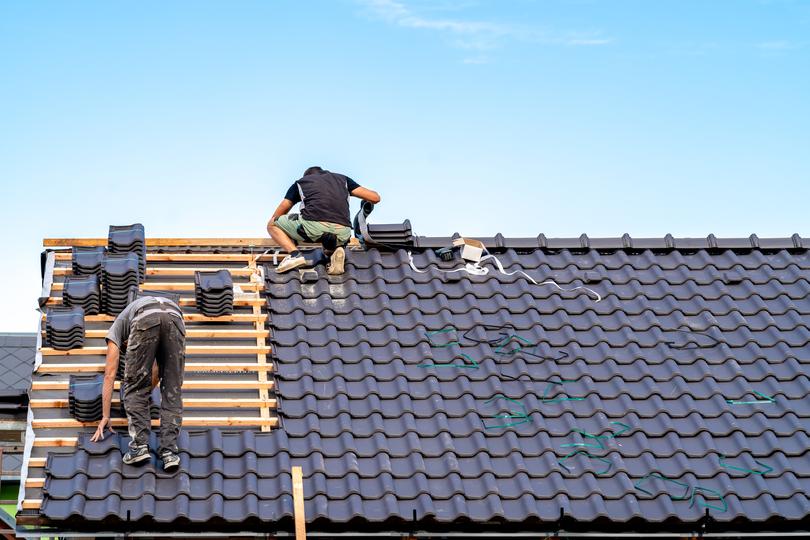
Cedar Shake Roof Replacement
Beautiful and durable cedar shake roofing services. We specialize in cedar shake installation, repair, and replacement, providing a classic and elegant look for
Ready for a New Shingle Roof?
Find The Best Shingle Roof Replacement Contractors On Roofyng.com!
Shingle Roof Replacement Glossary
Asphalt Shingles
Architectural Shingles
Three-Tab Shingles
Roof Deck
Underlayment
Ice & Water Shield
Flashing
Roof Ventilation
Soffit Vents
Ridge Vent
Drip Edge
Gutter
Downspout
Roof Pitch
Square
Shingle Roof Replacement FAQs
How much does it cost to replace a shingle roof in the USA?
How long does it take to replace a shingle roof?
What are the different types of shingles available for roof replacement?
- Asphalt shingles: The most popular and affordable option, available in various styles and colors.
- Fiberglass shingles: More durable and fire-resistant than asphalt shingles, but slightly more expensive.
- Architectural shingles: Also known as dimensional or laminate shingles, they offer a thicker, more textured look and increased durability.
- Wood shingles and shakes: Offer a natural and aesthetically pleasing look, but require more maintenance and are less fire-resistant.
- Metal shingles: Durable, long-lasting, and energy-efficient, but can be more expensive than asphalt or fiberglass shingles.
- Slate shingles: A premium option known for its durability and beauty, but also the most expensive.
What are the signs that my shingle roof needs replacing?
- Missing, cracked, or curled shingles: Indicate age, weathering, or storm damage.
- Granule loss: If you see a lot of granules in your gutters or at the base of your downspouts, it's a sign of shingle deterioration.
- Leaks or water damage: Check for water stains on your ceilings or walls, especially after rain.
- Sagging or uneven rooflines: Could indicate structural damage or rotting roof decking.
- Moss or algae growth: Signifies moisture retention and potential damage to shingles.
- Increased energy bills: A worn-out shingle roof can lose its insulation properties.
How do I choose a reputable shingle roof replacement contractor?
- Experience and expertise: Look for contractors with a proven track record in shingle roof replacements.
- Licensing and insurance: Ensure they have the necessary licenses and insurance to operate in your area.
- Warranties: Inquire about both manufacturer and workmanship warranties.
- References and reviews: Check online reviews and ask for references from previous customers.
- Communication and professionalism: Choose a contractor who is responsive, communicative, and transparent about their process and pricing.
What is the process of replacing a shingle roof?
- Inspection and assessment: The contractor will inspect your roof to determine the extent of damage and the best course of action.
- Removal of old shingles: The existing shingles and underlayment are carefully removed.
- Roof deck inspection and repair: The roof deck is inspected for damage and any necessary repairs are made.
- Installation of underlayment: A waterproof underlayment is installed to protect the roof deck from moisture.
- Installation of new shingles: New shingles are installed according to manufacturer specifications.
- Flashing and ventilation: Flashing is installed around chimneys, vents, and other roof penetrations. Proper ventilation is ensured.
- Cleanup and disposal: The contractor will clean up the job site and dispose of old roofing materials properly.
- Final inspection: A final inspection is conducted to ensure the roof is installed correctly and meets all building codes.
What are the benefits of replacing my shingle roof?
- Improved protection from the elements: A new roof provides better protection against leaks, water damage, and wind damage.
- Enhanced curb appeal: A new shingle roof can significantly boost your home's aesthetic appeal and value.
- Increased energy efficiency: New shingles can offer better insulation, reducing your heating and cooling costs.
- Peace of mind: Knowing you have a durable and reliable roof provides peace of mind and avoids costly future repairs.
What are the different types of shingle roof warranties?
- Manufacturer's warranty: Covers defects in the shingles themselves, typically for a period of 20 to 50 years, depending on the shingle type and manufacturer.
- Workmanship warranty: Provided by the roofing contractor and covers the quality of the installation. These warranties usually range from 2 to lifetime years.
How can I prepare my home for a shingle roof replacement?
- Clear the area around your house: Remove any vehicles, outdoor furniture, or other items that could be in the way.
- Protect your landscaping: Cover plants and shrubs near the house with tarps or plastic sheeting.
- Remove wall decorations: Vibrations during the roof removal process can cause items to fall.
- Cover attic belongings: Dust and debris can fall into the attic during the replacement.
- Communicate with your contractor: Discuss access to your property, parking arrangements, and any specific concerns you have.,
What should I do with my old shingles after the replacement?
Can I replace my shingle roof myself?
How can I make my new shingle roof more energy-efficient?
- Choose light-colored shingles: They reflect more sunlight and heat, keeping your home cooler in the summer.
- Install reflective roof coatings: These coatings can further enhance the reflectivity of your roof.
- Add attic insulation: Proper insulation helps regulate attic temperature and reduces heat transfer to your living space.
- Install ridge vents and soffit vents: These vents promote air circulation in the attic, preventing heat build-up and moisture accumulation.
What are the best shingles for high winds?
How do I know if my shingle roof has hail damage?
- Missing or damaged shingles: Hail can crack, dent, or completely dislodge shingles.
- Granule loss: Hail impacts can knock off shingle granules, leaving bare spots or exposing the underlying asphalt.
- Bruises or dents on shingles: Check for soft spots or indentations on the shingle surface.
- Damage to flashing or gutters: Hail can also dent or damage metal flashing and gutters.
How long do asphalt shingles last?
What is the difference between 3-tab and architectural shingles?
What is the best time of year to replace a shingle roof?
How do I maintain my shingle roof?
- Remove debris: Regularly clear leaves, branches, and other debris from your roof to prevent moisture buildup and damage.
- Clean gutters: Clogged gutters can cause water to back up and damage your roof. Clean them at least twice a year.
- Trim overhanging branches: Trees that overhang your roof can drop leaves and branches, and their roots can damage your roof structure.
- Inspect for damage: After storms or heavy winds, inspect your roof for missing or damaged shingles and have them repaired promptly.
- Schedule professional inspections: Consider having a professional roof inspection every few years to identify potential problems early on.
How do I file a roof insurance claim for shingle damage?
- Contact your insurance company: Report the damage as soon as possible.
- Document the damage: Take photos and videos of the damaged areas.
- Get a professional inspection: Have a roofing contractor inspect the roof and provide a written estimate for repairs or replacement.
- Meet with the insurance adjuster: The insurance company will send an adjuster to assess the damage.
- Review the claim settlement: Once the adjuster's report is finalized, the insurance company will offer a settlement amount.
What is the difference between a roof repair and a roof replacement?
What are ice dams, and how can they damage my shingle roof?
What are the most common causes of shingle roof damage?
- Weathering: Sun, wind, rain, and temperature fluctuations can gradually degrade shingles over time.
- Storm damage: Hail, strong winds, and heavy snow can cause significant damage to shingles.
- Improper installation: Incorrectly installed shingles can lead to premature failure and leaks.
- Lack of maintenance: Neglecting to clear debris, clean gutters, and address minor repairs can shorten the lifespan of a shingle roof.
- Age: As shingles age, they become brittle and more susceptible to damage.
How do I choose the right shingle color for my home?
- Your home's architectural style: Certain shingle colors complement specific architectural styles better than others.
- Your personal preferences: Choose a color that you find aesthetically pleasing and that enhances your home's curb appeal.
- Energy efficiency: Lighter-colored shingles reflect more sunlight and can help keep your home cooler in the summer.
- Your neighborhood's aesthetic: Consider the overall look and feel of your neighborhood when choosing a shingle color.
How do I find a shingle roof replacement contractor near me in the USA?
How much does it cost to replace a shingle roof in the USA?
How long does it take to replace a shingle roof?
What are the different types of shingles available for roof replacement?
- Asphalt shingles: The most popular and affordable option, available in various styles and colors.
- Fiberglass shingles: More durable and fire-resistant than asphalt shingles, but slightly more expensive.
- Architectural shingles: Also known as dimensional or laminate shingles, they offer a thicker, more textured look and increased durability.
- Wood shingles and shakes: Offer a natural and aesthetically pleasing look, but require more maintenance and are less fire-resistant.
- Metal shingles: Durable, long-lasting, and energy-efficient, but can be more expensive than asphalt or fiberglass shingles.
- Slate shingles: A premium option known for its durability and beauty, but also the most expensive.
What are the signs that my shingle roof needs replacing?
- Missing, cracked, or curled shingles: Indicate age, weathering, or storm damage.
- Granule loss: If you see a lot of granules in your gutters or at the base of your downspouts, it's a sign of shingle deterioration.
- Leaks or water damage: Check for water stains on your ceilings or walls, especially after rain.
- Sagging or uneven rooflines: Could indicate structural damage or rotting roof decking.
- Moss or algae growth: Signifies moisture retention and potential damage to shingles.
- Increased energy bills: A worn-out shingle roof can lose its insulation properties.
How do I choose a reputable shingle roof replacement contractor?
- Experience and expertise: Look for contractors with a proven track record in shingle roof replacements.
- Licensing and insurance: Ensure they have the necessary licenses and insurance to operate in your area.
- Warranties: Inquire about both manufacturer and workmanship warranties.
- References and reviews: Check online reviews and ask for references from previous customers.
- Communication and professionalism: Choose a contractor who is responsive, communicative, and transparent about their process and pricing.
What is the process of replacing a shingle roof?
- Inspection and assessment: The contractor will inspect your roof to determine the extent of damage and the best course of action.
- Removal of old shingles: The existing shingles and underlayment are carefully removed.
- Roof deck inspection and repair: The roof deck is inspected for damage and any necessary repairs are made.
- Installation of underlayment: A waterproof underlayment is installed to protect the roof deck from moisture.
- Installation of new shingles: New shingles are installed according to manufacturer specifications.
- Flashing and ventilation: Flashing is installed around chimneys, vents, and other roof penetrations. Proper ventilation is ensured.
- Cleanup and disposal: The contractor will clean up the job site and dispose of old roofing materials properly.
- Final inspection: A final inspection is conducted to ensure the roof is installed correctly and meets all building codes.
What are the benefits of replacing my shingle roof?
- Improved protection from the elements: A new roof provides better protection against leaks, water damage, and wind damage.
- Enhanced curb appeal: A new shingle roof can significantly boost your home's aesthetic appeal and value.
- Increased energy efficiency: New shingles can offer better insulation, reducing your heating and cooling costs.
- Peace of mind: Knowing you have a durable and reliable roof provides peace of mind and avoids costly future repairs.
What are the different types of shingle roof warranties?
- Manufacturer's warranty: Covers defects in the shingles themselves, typically for a period of 25 to 50 years, depending on the shingle type and manufacturer.
- Workmanship warranty: Provided by the roofing contractor and covers the quality of the installation. These warranties usually range from 2 to 10 years.
How can I prepare my home for a shingle roof replacement?
- Clear the area around your house: Remove any vehicles, outdoor furniture, or other items that could be in the way.
- Protect your landscaping: Cover plants and shrubs near the house with tarps or plastic sheeting.
- Remove wall decorations: Vibrations during the roof removal process can cause items to fall.
- Cover attic belongings: Dust and debris can fall into the attic during the replacement.
- Communicate with your contractor: Discuss access to your property, parking arrangements, and any specific concerns you have.,
What should I do with my old shingles after the replacement?
Can I replace my shingle roof myself?
How can I make my new shingle roof more energy-efficient?
- Choose light-colored shingles: They reflect more sunlight and heat, keeping your home cooler in the summer.
- Install reflective roof coatings: These coatings can further enhance the reflectivity of your roof.
- Add attic insulation: Proper insulation helps regulate attic temperature and reduces heat transfer to your living space.
- Install ridge vents and soffit vents: These vents promote air circulation in the attic, preventing heat build-up and moisture accumulation.
What are the best shingles for high winds?
How do I know if my shingle roof has hail damage?
- Missing or damaged shingles: Hail can crack, dent, or completely dislodge shingles.
- Granule loss: Hail impacts can knock off shingle granules, leaving bare spots or exposing the underlying asphalt.
- Bruises or dents on shingles: Check for soft spots or indentations on the shingle surface.
- Damage to flashing or gutters: Hail can also dent or damage metal flashing and gutters.
How long do asphalt shingles last?
What is the difference between 3-tab and architectural shingles?
What is the best time of year to replace a shingle roof?
How do I maintain my shingle roof?
- Remove debris: Regularly clear leaves, branches, and other debris from your roof to prevent moisture buildup and damage.
- Clean gutters: Clogged gutters can cause water to back up and damage your roof. Clean them at least twice a year.
- Trim overhanging branches: Trees that overhang your roof can drop leaves and branches, and their roots can damage your roof structure.
- Inspect for damage: After storms or heavy winds, inspect your roof for missing or damaged shingles and have them repaired promptly.
- Schedule professional inspections: Consider having a professional roof inspection every few years to identify potential problems early on.
How do I file a roof insurance claim for shingle damage?
- Contact your insurance company: Report the damage as soon as possible.
- Document the damage: Take photos and videos of the damaged areas.
- Get a professional inspection: Have a roofing contractor inspect the roof and provide a written estimate for repairs or replacement.
- Meet with the insurance adjuster: The insurance company will send an adjuster to assess the damage.
- Review the claim settlement: Once the adjuster's report is finalized, the insurance company will offer a settlement amount.
What is the difference between a roof repair and a roof replacement?
What are ice dams, and how can they damage my shingle roof?
What are the most common causes of shingle roof damage?
- Weathering: Sun, wind, rain, and temperature fluctuations can gradually degrade shingles over time.
- Storm damage: Hail, strong winds, and heavy snow can cause significant damage to shingles.
- Improper installation: Incorrectly installed shingles can lead to premature failure and leaks.
- Lack of maintenance: Neglecting to clear debris, clean gutters, and address minor repairs can shorten the lifespan of a shingle roof.
- Age: As shingles age, they become brittle and more susceptible to damage.
How do I choose the right shingle color for my home?
- Your home's architectural style: Certain shingle colors complement specific architectural styles better than others.
- Your personal preferences: Choose a color that you find aesthetically pleasing and that enhances your home's curb appeal.
- Energy efficiency: Lighter-colored shingles reflect more sunlight and can help keep your home cooler in the summer.
- Your neighborhood's aesthetic: Consider the overall look and feel of your neighborhood when choosing a shingle color.
